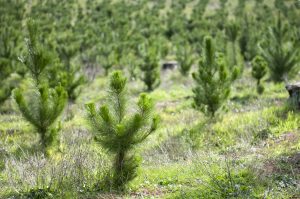At Pinepac Group, we hold a deep reverence for the environment. While we primarily operate as a timber production company, we're acutely aware of the global concerns surrounding issues like deforestation. That's why Pinepac Group exclusively utilizes sustainable and renewable Radiata Pine, sourced locally in New Zealand.
Our commitment to environmental responsibility extends throughout our production process. We prioritize maximizing resource efficiency and minimizing waste, recognizing our duty to leave a positive impact on the environment. Bark removed during initial processing finds purpose in landscaping and planting applications, demonstrating our dedication to utilizing every part of the log.
As the logs journey through our sawmill, they're meticulously transformed into various timber sizes, accompanied by the production of wood chips and sawdust. These byproducts are repurposed for applications such as animal bedding and bioenergy production, furthering our sustainability efforts.
Following sawing, timber undergoes kiln drying, powered by 100% untreated bioenergy woodmass—a sustainable, carbon-neutral fuel source. Our drying process ensures optimal moisture content and quality for the finished product.
Once dried, timber is planed to its final dimensions, with the untreated wood shavings serving as fuel for our boilers. Portions of the planed timber are ready for sale, while others are tailored to customer specifications through our optimizing line. Offcuts are repurposed as dry firewood or donated to local community groups.
Before distribution, timber undergoes mechanical grading for strength and stiffness. Additionally, it's treated with a waterborne natural boron salt preservative, achieving H1.2 treatment for structural framing. This treatment safeguards against borer attacks and decay caused by moisture exposure.
For further information, please refer to the current WOODmark® Boron Treated Timber information datasheet.

